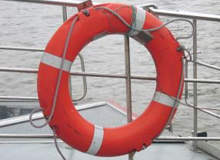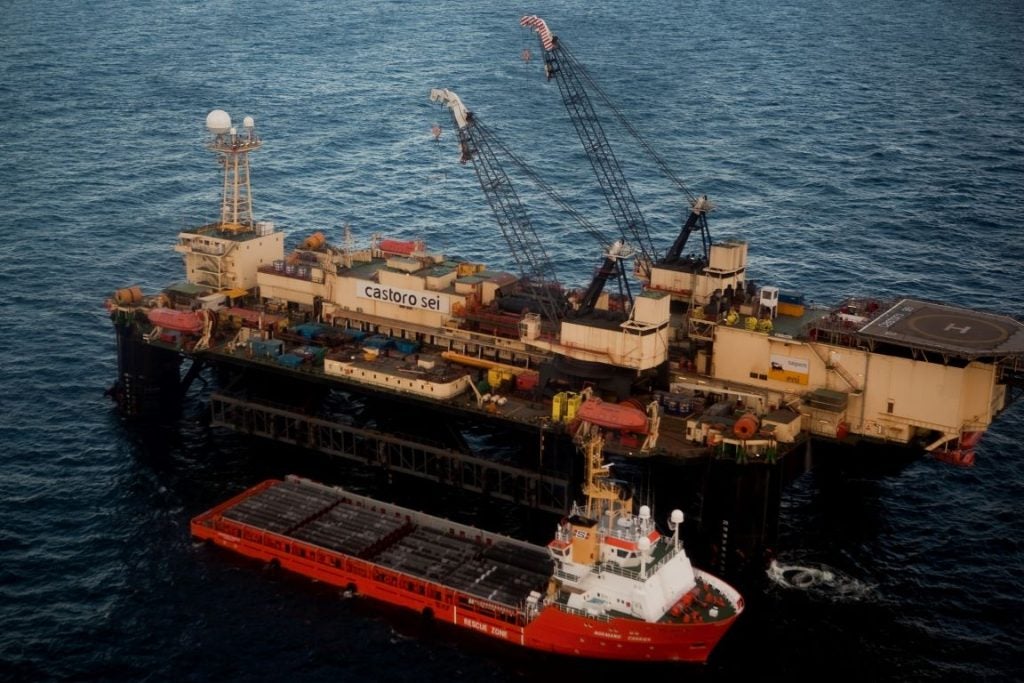
Safety lies at the heart of the marine construction industry. It is core to all activities undertaken by the global membership of the IMCA.
It is not just a buzzword, but the strongest of commitments, with the ultimate goal being target zero – or a total lack of incidents. If ever there was a topic about which there is a feeling of passion and commitment from an entire industry, it is that of safety.
Safety is central to all offshore operations from the point of view of management, employees and the corporate whole. Each organisation will have a slightly different way of expressing its views on the importance of safety.
This month my colleague Nick Hough, technical adviser at IMCA, explains ours. We look forward to receiving any feedback you may have.
IMCA’s approach is based on defining responsibilities, procedures and equipment in our guidelines. We provide helpful tools, such as trials and audit guidelines, as well as safety materials including pocket cards, posters and DVDs.
See Also:
Acting on behalf of our members, we are a primary conduit for sharing knowledge about incidents. We also measure contractor members’ safety performance to benchmark companies so that they know how they compare to their peer group and other industries and therefore how they can encourage improvement.
How well do you really know your competitors?
Access the most comprehensive Company Profiles on the market, powered by GlobalData. Save hours of research. Gain competitive edge.

Thank you!
Your download email will arrive shortly
Not ready to buy yet? Download a free sample
We are confident about the unique quality of our Company Profiles. However, we want you to make the most beneficial decision for your business, so we offer a free sample that you can download by submitting the below form
By GlobalDataThe IMCA 2007 annual safety statistics report gives shows considerable improvement in members’ safety standards over the years and demonstrates that our industry is consistent with other peer groups, but highlights the need for continued effort – there remains much to be done.
The IMCA safety philosophy
Being an active member of IMCA involves adopting IMCA guidelines where appropriate (with safety at the heart of virtually all of them), agreeing to be audited to those guidelines by clients, furthering the aims and objectives of IMCA – with target zero at the top of the list – and promoting self-regulation. These undertakings sit in the constitution and in every copy of each guideline published.
We also encourage companies to share their experiences for the common good of the entire industry. The importance of this cannot be stressed enough.
Sharing information on incidents can be shown to save lives. All information received by IMCA on any incident, large or small, is made anonymous and then issued as a safety flash.
Self-regulation is key
Trade associations do not regulate in the way that legislators do. They provide guidance to members and work to update and introduce new guidelines wherever there appears to be a need.
When members work to those guidelines, it is a way of self-regulating, rather than looking to clients or governments for rules. Self-regulation is the logical result of action by industry participants to address a number of concerns.
It is therefore generated by the industry and accepted by governments, regulators, clients and contractors, and it benefits all through speed, flexibility, improvements, benchmarking and aiding standardisation. Re-inventing the wheel is avoided and there is increased efficiency in crucial areas such as tendering, working and disputes.
The vital tools
Safety is promoted by a host of vital tools including good practice guidelines, competence initiatives, audit documents, safety flashes and incident analysis, statistics and promotional material.
Good practice should reflect what good companies normally do. This leaves the option to become still better where required, appropriate or desired.
It also sets an aspirational level for replacing bad practice. The guidelines cover procedures, personnel and equipment, as well as audit formats and maintenance recommendations.
IMCA’s competence assurance and assessment guidance provides a framework designed to ensure that individuals have the training and experience to complete their work. They should be familiar with the task and thus comfortable to carry it out in complete safety.
Demonstrable competence is important to employers and clients.
Safety statistics
We have collated annual safety statistics (covering fatalities and injuries) supplied by members for more than ten years. The 2007 dataset is drawn from 100 IMCA contractor members, based on 309.6 million man-hours of work (252 million offshore man-hours).
This is a significant increase on the 2006 figures, and the number of contributors has increased by 35%, rising from 74 in 2006.
The safety statistics are consistent with those of the other main industry trade associations, including the International Association of Oil & Gas Producers (OGP) and the International Association of Drilling Contractors (IADC) – with details of their results included in the IMCA report.
As in previous years, data are separated into separate offshore and onshore activity to improve consistency. The offshore statistics cover only offshore work, whereas the onshore figures cover work in such areas as fabrication yards and office work.
In 2007 the lost time injury frequency rate (LTIFR) and the total recordable injury rate (TRIR) have shown a broad continuation of the flat-line trend of recent years, again highlighting the need for further efforts and the importance of guarding against complacency.
In the past two years information has been collected on fatalities and the root causes of lost time incidents (LTIs). This shows that the most common root causes are "slips, trips and falls" and "struck by", with "caught between" following a close third.
Members can compare their own statistics to the whole report or company size peer-groups to maximise the benchmarking benefits.
Personal safety
As our annual safety statistics show, "slips, trips and falls", "struck by" and "caught between" are the most common causes of serious accidents. By means of pocket safety cards (there are now 15 in the set), colourful and eye-catching posters, and DVDs, IMCA continues to stress the vital safety messages.
Our DVDs are now being dubbed into all the main languages spoken on members’ vessels. I read with interest the recent publicity about new research suggesting that Henry VIII’s flagship Mary Rose sank because of a disastrous misunderstanding between its captain and his Spanish-speaking crew.
We must ensure that everyone understands and takes on board our vital safety information, can share knowledge and – crucially – stop anyone who is taking the wrong route.
Workers and managers have a fundamental responsibility to stop the job if something is not right or if something important changes. It is also vital not to start a job before a risk assessment and discussion, and to ensure that everything necessary for a safe operation is in place.
IMCA’s integrated approach crosses companies and disciplines, projects and geographies – from site to office and from management and to operatives. The approach works and statistics indicate that we’re on the right track, but there is always more that needs to be done to reach target zero.
This is not merely a personal passion, but a passion held by the whole industry.






